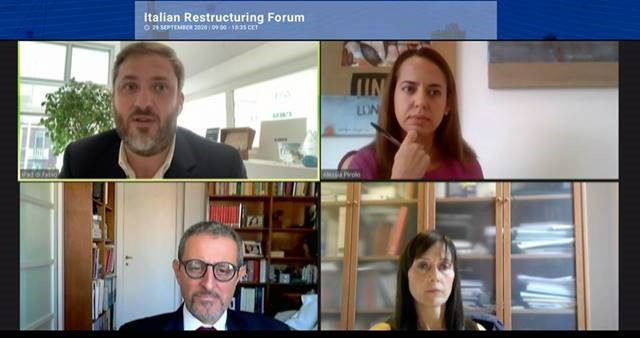“During the Covid-19 emergency, the Prelios Group was faced with the challenge of building a new industrialized management machine for UTPs. I think we succeeded by focusing on people, processes and systems. First of all, despite a very difficult situation, we’ve brought 67 new recruits on board over the last six months,” said Fabio Panzeri at the Debtwire Italian Restructuring Forum on September 29, 2020. “They are professionals with an average age of 33, who have provided the Group with new energy and skills. This together with our rigorous management processes and incentive mechanisms has enabled us to move from the outsourcer mentality typical of traditional servicers, to a ‘principal mentality’, where our people operate as if they were investors with a strong focus on results. The search for young talents continues: in ten days’ time, on October 10, we shall be holding a face-to-face recruitment day at our offices in Milan, the first one this year after months when recruitment was conducted entirely on a remote basis.”

Finally, with regard to probable defaults, said the Prelios Chief Operating Officer, “we have invested heavily in IT and in September we launched Pegaso, our proprietary UTP workflow system based on cutting-edge technology. The best evidence of the result is that we have already managed to put 340 companies back on a performing basis, and aim to raise the number to 400 by the end of 2020. The fact of putting large numbers of companies that were in trouble back on a sound footing also has obvious social implications.”
Panzeri was taking part in The future great new wave of NPLs and UTPs on a panel together with Katia Mariotti, Head of NPL, Banca Ifis; Andrea Tresoldi, Head of UTP, Intrum; Michele Filosa, Restructuring Manager, Unicredit. The discussion was moderated by journalist Alessia Pirolo, Head of NPL Coverage at Debtwire.
On the current European debate on bad banks, Panzeri went on to say: “Generally speaking, I think the question we should be asking is not ‘yes or no?’, but ‘how?’. One example is certainly Italy and the NPL deleverage achieved not with a bad bank, but with the State GACS guarantee, a model that can probably be replicated on UTPs. Another example is Spain, where a bad bank has been created in an intelligent way. First of all, with clear rules: a body that has taken part in systematic rescues without competing with private investors on portfolio sales, avoiding obvious moral hazard problems. Then with clear, measurable public deleverage goals – not AuM goals – which made it possible to monitor management efficiency. Finally, not the creation of some public recovery giant, but outsourcing to private servicers (Altamira, Servihabitat, Solvia and Haya), controlled by large private equity funds, competing against one another on results: these mechanisms have stimulated market modernization and efficiency, creating a sustainable credit servicing industry.”
Always use the online HTML Editor to compose the content for your website easily.